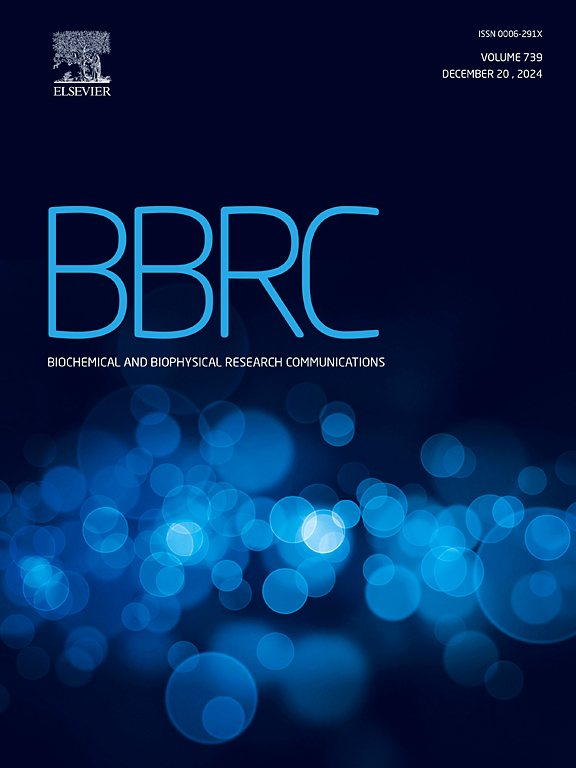Enhanced sampling simulations to explore himalayan phytochemicals as potential phosphodiesterase-1 inhibitor for neurological disorders
IF 2.5
3区 生物学
Q3 BIOCHEMISTRY & MOLECULAR BIOLOGY
Biochemical and biophysical research communications
Pub Date : 2025-03-11
DOI:10.1016/j.bbrc.2025.151614
引用次数: 0
Abstract
The rising incidence of neurological and neuropsychiatric disorders underscores the urgent need for innovative and evidence based treatment strategies. Phosphodiesterase-1 (PDE1) is a dual-substrate (cAMP/cGMP) phosphodiesterase expressed in the central nervous system and peripheral areas, which modulates cyclic nucleotide signaling cascades. Inhibiting PDE1 enhances cAMP/cGMP levels, promoting neuronal plasticity and neuroprotection, making it a promising therapeutic strategy for neurological disorders. The pursuit of targeting this enzyme for treating neurological and neuropsychiatric disorders has faced obstacles due to the absence of potent, selective, and brain-penetrating inhibitors. This study aimed to identify potent PDE1 inhibitors by leveraging a diverse collection of bioactive molecules derived from Himalayan flora through computational screening methods. The four most promising hit molecules were chosen for further investigation and subjected to Molecular Dynamics (MD) simulations, binding free energy calculations, along with standard molecules. It was found that the hit molecules stigmast-7, corilagin and emblicanin-A had formed the most stable complexes, and also, the least binding free energy was observed for stigmast-7 among the hit molecules. Additionally, the pulling simulations indicated that stigmast-7 and corilagin were the most robust binders, and required the highest force to dissociate from the binding cavity completely. The umbrella sampling simulations also revealed the lowest binding free energy for corilagin and stigmast-7. The insights gained from this study provide a foundation for future research into PDE1-targeted therapies, highlighting the potential of Himalayan bioactive compounds in developing novel therapeutic interventions.

求助全文
约1分钟内获得全文
求助全文
来源期刊
CiteScore
6.10
自引率
0.00%
发文量
1400
审稿时长
14 days
期刊介绍:
Biochemical and Biophysical Research Communications is the premier international journal devoted to the very rapid dissemination of timely and significant experimental results in diverse fields of biological research. The development of the "Breakthroughs and Views" section brings the minireview format to the journal, and issues often contain collections of special interest manuscripts. BBRC is published weekly (52 issues/year).Research Areas now include: Biochemistry; biophysics; cell biology; developmental biology; immunology
; molecular biology; neurobiology; plant biology and proteomics

 求助内容:
求助内容: 应助结果提醒方式:
应助结果提醒方式:


